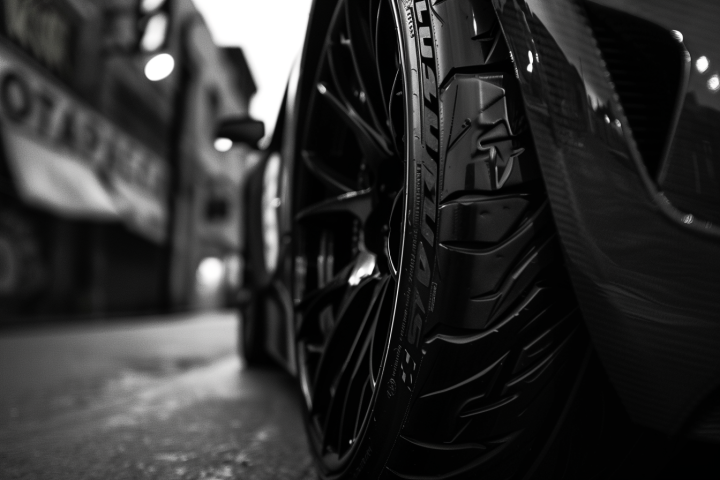Last Updated on July 30, 2025
Unlocking the Secrets Behind Tire Tread
When it comes to your vehicle’s tires, one critical factor that often goes unnoticed is tread wear. However, understanding treadwear and its implications can significantly impact your driving experience, safety, and budget. In this comprehensive guide, we will unravel the mysteries behind tread, explain how it affects your tires, and offer valuable insights to help you make informed decisions about your tire choices.
Treadwear refers to the rate at which the tread on your tires wears down over time. It is typically expressed as a three-digit number, known as the tread wear rating, that indicates a tire’s durability relative to a reference tire. The higher the tread rating, the longer the tire is expected to last.
How Treadwear Ratings Work
Tire manufacturers assign treadwear ratings based on the results of standardized tests. The reference tire, rated at 100, represents a baseline for comparison. Tires with a rating of 200, for example, are expected to last twice as long as the reference tire, while tires with a rating of 50 are expected to wear out half as quickly.
Importance of Treadwear
Understanding treadwear is crucial for several reasons:
1. Longevity
Treadwear directly impacts tire lifespan. Tires with a higher treadwear rating tend to last longer, reducing the frequency and cost of replacements.
2. Performance
Tire performance, including traction, handling, and braking, can be influenced by tread life expectancy. As tires wear down, their performance may decrease, affecting your driving experience and safety.
3. Budget
Choosing tires with an appropriate treadwear rating for your driving habits can save you money in the long run. Tires that last longer require fewer replacements, reducing maintenance costs.

Factors Affecting Tire Tread
Several factors can influence how quickly your tires wear down:
1. Driving Habits
Aggressive driving, high speeds, and abrupt stops can accelerate tire wear. To maximize treadwear, adopt a smooth and cautious driving style.
2. Tire Maintenance
Regular tire maintenance, including proper inflation, alignment, and rotation, can help ensure even wear and extend tire lifespan.
3. Road Conditions
Driving on rough or poorly maintained roads can contribute to faster treadwear. Avoiding such conditions whenever possible can help preserve your tires.
Making Informed Tire Choices
When selecting tires, consider your specific driving needs and conditions. A tire with a high tread wear rating may be ideal for long highway commutes, while a lower rating might suffice for occasional city driving.
Michelin Tires
When you apply the brakes in your vehicle, tires are a big part of the equation; add water, and they become even more critical in deceleration. As the tread wears down over time, a tire’s ability to perform becomes diminished from treadwear. Michelin has responded to this with the Premier A/S tire, which debuted this year at the North American International Auto Show. This touring tire is all-season-ready and intended for passenger cars.
This new Michelin tire addresses the effects of tread wear. It has wider channels and hidden rain grooves that only emerge as the tire is used.
Michelin introduced this tire and its technology to reduce stopping distances as the tire wears, offering more protection from hydroplaning during its life compared with conventional car tires.
This tire will be available this spring and replaces the Michelin MXV4. With a 60,000-mile warranty and a wide range of sizes, this may be a top consumer pick, given the unique safety features. Future measures for SUVs and crossover vehicles are expected later this year.
Conclusion
Treadwear is a critical factor in your tire’s performance and longevity. Understanding treadwear ratings and following proper maintenance ensures your tires last longer and keep you safe. If you’re ready to explore high-quality tires with excellent tread life expectancy ratings, visit Tires Easy today.
Ready to upgrade your tires with exceptional tread life expectancy?
Explore Tires Easy’s extensive selection of long-lasting and high-performance tires. Drive with confidence and longevity in every mile!
Shop now at Tires Easy.
FAQs
How do you read a treadwear rating?
A treadwear rating is a three-digit number that indicates the tire’s expected lifespan relative to a reference tire. The reference tire is rated at 100, and any tire with a higher number is expected to last longer, while a tire with a lower number is expected to wear out more quickly. For example, a treadwear rating of 200 should last twice as long as the reference tire, while a tire with a rating of 50 is expected to wear out half as quickly.
What does Treadwear 440 mean?
A treadwear rating of 440 indicates that the tire is expected to wear out approximately 4.4 times slower than the reference tire rated at 100. In practical terms, a tire with a tread life expectancy of 440 should have a longer lifespan and wear down more slowly, making it a good choice for drivers looking for durability and longevity.
What does Treadwear 600 mean?
A tread life expectancy of 600 indicates that the tire is expected to wear out approximately six times slower than the reference tire rated at 100. Tires with a treadwear rating 600 are considered highly durable and long-lasting, making them an excellent choice for drivers seeking extended tread life and cost savings on replacements.
What is a standard tread wear rating?
There is no single “standard” tread wear rating, as different tires are designed for various purposes and driving conditions. Treadwear ratings can vary widely across tire models and brands. However, a tread wear rating of 100 in the industry is typically used as a baseline or reference point for comparison.
Tires with higher ratings are expected to last longer, while those with lower ratings will wear out more quickly. To ensure optimal performance and longevity, it’s essential to consider your specific driving needs and conditions when selecting tires with an appropriate tread wear rating.
-
Automotive Specialist
-
Proofreader
-
Writer









